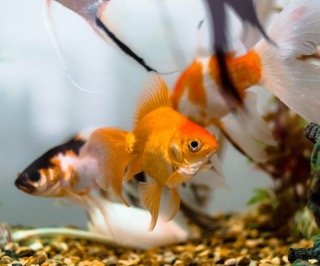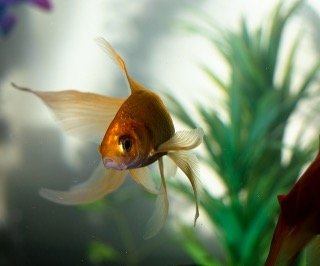
INTRODUCTION
Almost all goldfish purchased from pet stores will have flukes. This is because the parasite won’t manifest until the goldfish’s immune system has been damaged by travel and the unfamiliar environment. Flukes come in two main categories: gill flukes, which are the most prevalent and are brought on by the parasite Dactylogrus, and body flukes, which are brought on by Gyrodactylus.
Body Flukes and Gill Explanation
The flatworm parasites lay their eggs in the gill flukes, and the live young are born in the body flukes. Without a microscope, you won’t be able to spot flukes, but a skin scrape can help you find them. Flukes are white and hardly seen on goldfish with light colors, but they are evident on fish with dark colors, such as black moors. When it first hatches, the real worm is typically 1 millimeter long.
If flukes are not properly diagnosed and treated, they can develop into rather serious conditions. It is crucial to quarantine new fish and treat them with a broad-spectrum treatment as a result. The rest of the goldfish in the tank will also have fluke if one of them does.
Gill Flukes signs and symptoms
The following signs indicate the fluke parasite’s initial stage in goldfish:
- Gill rubbing against any tank object or diving across the substrate
- They flutter erratically as they swim
- tangled fins
- broken gills
- showing frequent signs of yawning
- The gills move quickly.
- Speeding past the tank
- slamming against the glass
- loss of scales or physical harm by rubbing their body against hard surfaces
- The signs of body lice
These symptoms will appear in the second stage of flukes:
- wriggling fins
- tangled fins
- Shaking
- sizing loss
- Ulcers
- Red spots
- Black spots on the gills
- Wounds
- Lethargy
- reduced appetite
- Loss of weight
- boring coloring
How Flukes Infest Goldfish
You might be curious as to how a goldfish acquires flukes given how prevalent they are in goldfish. Usually, the source is a fish that was purchased but was diseased. This fish will harbor adult flukes, which will later lay eggs in the gills of goldfish that appear to be in good health. Flukes can evade simple treatments and reproduce quickly in goldfish breeding facilities. These goldfish find their way into pet shops where they spread the fluke eggs and infect one another.
When you buy the goldfish, you can either put it in a brief quarantine or right into the tank, where the flukes will feed on the defenseless fish.
The goldfish will start to exhibit symptoms in the later stages, and flukes should be treated right away with the appropriate treatment.
Flukes on Fried Goldfish
Flukes are extremely dangerous and can quickly wipe out an entire brood of goldfish fry. Small fry lack the immune system maturity of adult goldfish, which allows them to fight off parasites more successfully. Hundreds of goldfish fry can be killed by gill flukes in their initial stage. When treating goldfish eggs and fry, a different approach is taken than when treating juvenile or adult goldfish.
Treatment option
Flukes are a difficult parasite to cure, and the majority of aquatic drugs won’t be able to eradicate every adult fluke. Fortunately, there are several home cures and effective aquatic drugs available to treat the flukes’ symptoms and stop them from reproducing.
Dips salt
Put dechlorinated water into a quarantine tank or other container. Place the goldfish in the tank for 30 minutes every three hours during the day after adding a lot of aquarium salt—roughly 1 teaspoon for 1 gallon of water. This should be done for at least 4 days. In the main tank, you can also add half a teaspoon of aquarium salt for every five gallons. Flukes cannot tolerate aquarium salt in low levels, but goldfish can!
Medication
Flukes require a top-notch, all-purpose drug designed specifically for parasites in cold-water fish. These drugs work well to cure goldfish flukes at all stages, from larvae to adults:
- GoldMed Tetra (safe to add into the main tank)
- Coastal Metroplex (safe to add into the main tank)
- General Tonic Plus Tetra (safe to add into the main tank)
- Anti-parasite NT Labs (safe to add into the main tank)
- 15-minute methylene blue dips
- 1 hour Seachem Cupramine plunge
Conclusion
Even though goldfish flukes are widespread, the proper medicine can cure them. You should take action as soon as you see fluke symptoms. The more quickly the goldfish are treated and diagnosed, the more effective the treatment will be. Never interchange equipment between tanks unless you are using a severe sterilizer in between and always maintain appropriate tank cleanliness. The spread of many fish diseases to other tanks can be stopped by washing your hands with an antibacterial soap.





